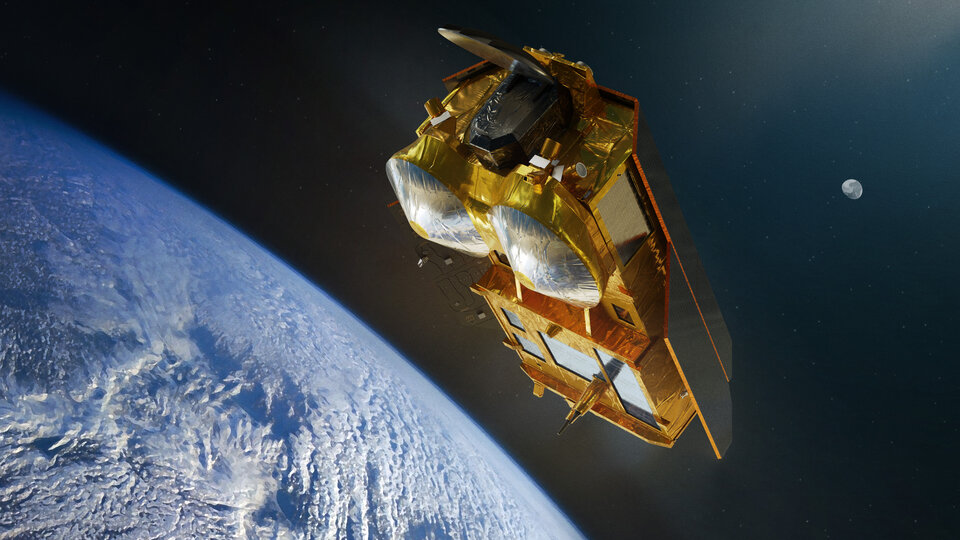Antarctica vulnerable to extreme events
According to the World Meteorological Organization, July 2023 is likely to have been the hottest month on record. While much of Europe, North America and Asia suffered the immediate consequences of these brutal temperatures, extreme events are also hitting hard far away in the icy reaches of Antarctica. In a paper published today, scientists highlight Antarctica’s vulnerability to extremes and the role that satellites play in monitoring this remote region.
The research paper, which was published in the journal Frontiers in Environmental Science, discusses the impact of extreme events on the Antarctic environment including its weather, sea-ice extent, ocean heatwaves, glaciers and ice shelves, and the way extremes can affect marine and land biodiversity.
Anna Hogg, from the University of Leeds and co-author of the study, said, “The impacts of climate change seem to hit the headlines almost daily now. We’ve recently seen incredibly high temperatures in southern Europe and fires in Canada, for example. One might think that the huge remote continent of Antarctica with its kilometres-thick ice sheet could withstand extremes brought about by climate change, but this is absolutely not the case.

“For example, last year the temperature reached an incredible 38.5°C above the mean in East Antarctica. Now we are seeing that the extent of sea ice around the continent is at an all-time low for this time of the year. This is worrying because much more winter sea ice should be forming.
“The feedback loops involved in the climate system are very complex and we still have much to learn. Satellites orbiting Earth such as the Copernicus Sentinel-1, ESA’s CryoSat and missions to be launched in the future, are vital for measuring and monitoring this remote part of our world.”
The Southern Ocean has not escaped rises in water temperatures either. Although sparser than for other oceans, 19 marine heatwaves were documented between 2002 and 2018 in the ocean waters that surround Antarctica. However, projecting what might happen in future years is difficult.
“Warmer waters are eating away the ice under the floating ice shelves. Over the past five decades, satellites have observed the retreat, thinning and disintegration of Antarctic ice shelves, particularly on the Antarctic Peninsula,” said Martin Siegert, from the University of Exeter and lead author of the study.

“Ice shelves are important because they provide buttressing support that stabilises the rate of flow from the ice sheet on land. When ice on land is lost to the sea, it adds to sea-level rise.
“Warming ocean waters also prevents sea ice from forming, which is what we are seeing now. However, we need to understand more as it’s unclear if water temperatures alone are causing this lack of ice and if we are heading for a long period of low sea ice. With more open water, more of the Sun’s heat will be absorbed by the ocean, further exacerbating ocean warming.”
It goes both ways, as our warming climate is affecting Antarctica, these changes can have a knock-on effect in other parts of the world too.
ESA’s Anna Maria Trofaier said, “The Earth system is extremely complex. A change in one place can trigger a whole range of cascading effects elsewhere.
“When it comes to the Antarctic environment, which is so remote, satellites are particularly essential to delivering data that we collect over decades through our Climate Change Initiative so that trends can be monitored. Understanding the state of the climate system is crucial to underpinning policy decisions with confidence.

“Current satellite missions, and those being built such as the upcoming Copernicus Sentinel Expansion Missions, are key to measuring glacier ice velocities, sea-ice thickness and ice loss in general from both the land and the ocean. The European Space Agency is developing the next generation of satellites that will enable us to monitor Antarctica and the Southern Ocean more frequently and in finer detail.
“While monitoring trends is important, satellite data are also needed to unravel the intricate interplay between different aspects of the Earth system so that future changes can be better predicted, as highlighted in this research paper.”
Prof. Siegert noted, “Signatories to the Protocol on Environmental Protection to the Antarctic Treaty pledge to preserve the environment of this remote and fragile place. Nations must understand that by continuing to explore, extract and burn fossil fuels, the environment of Antarctica will become ever more affected in ways inconsistent with their pledge.”















 Germany
Germany
 Austria
Austria
 Belgium
Belgium
 Denmark
Denmark
 Spain
Spain
 Estonia
Estonia
 Finland
Finland
 France
France
 Greece
Greece
 Hungary
Hungary
 Ireland
Ireland
 Italy
Italy
 Luxembourg
Luxembourg
 Norway
Norway
 The Netherlands
The Netherlands
 Poland
Poland
 Portugal
Portugal
 Czechia
Czechia
 Romania
Romania
 United Kingdom
United Kingdom
 Slovenia
Slovenia
 Sweden
Sweden
 Switzerland
Switzerland







































